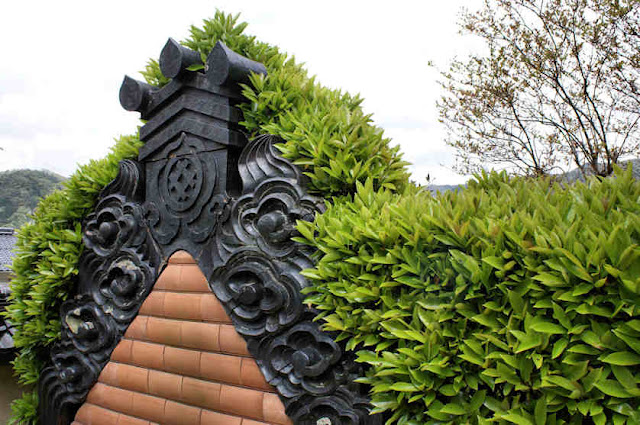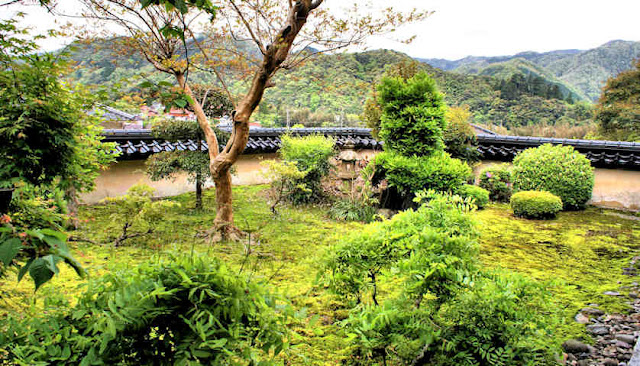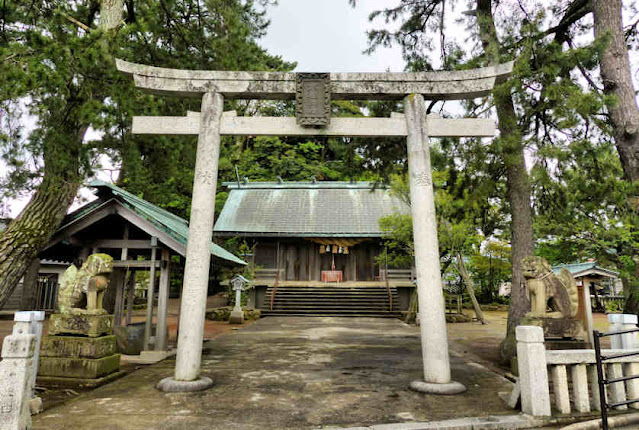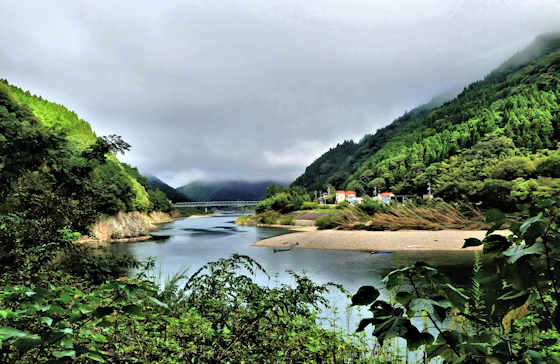Showing posts with label suijin. Show all posts
Showing posts with label suijin. Show all posts
Sunday, July 20, 2025
Okameyama Fukuoji Temple 12 Iwami Kannon Pilgrimage
Wednesday, July 2, 2025
Suijin Shrine Saigo
Tuesday, April 9, 2024
Sakurae Koinobori
Early May, 2013, and I start day 6 of my walk along the Kannon pilgrimage in the former province of Iwami, the Iwami Mandala Kannon. The last temple I visited was Senganji upriver in Kawamoto and the next two temples lie between it and my home so I decided to start out from my house and walk this section in reverse as it were.
Tuesday, September 12, 2023
Around Kawado on the Gonokawa River
The bridge that crosses the river to Kawado is painted in a very distinctive colour scheme that , I believe, represents the river, the sjy, and cherry blossoms. Not sure when the bridge was built. There was a major flood of Kawado back in the 1960's so it certainly postdates that. I have seen an old photos of a low wooden bridge in the 1920's, but for most of history the on,y wa to cross was by ferry.
Looking back downstream to the Kawado Bridge. This next section of the road has no buildings and very little traffic, the main road being on the opposite bank, as it is for most of the river. The rail line is overgrown.
Thursday, May 14, 2015
Pacifying the River Gods
This is a photo of the largest Onusa, from the biggest of the Suijin festivals held in Kawado. I did not attend this year as I was away but I have posted on it before, here, here, and here.
Sunday, May 8, 2011
Kawado Suijin Matsuri
Not only was Thursday Childrens Day and the Kawado Childrens Matsuri, but also the annual Kawado Suijin Matsuri. Following the ceremony in the shrine the mikoshi procession heads down to the river. The men on the right are carrying a huge length of giant bamboo which has an Onusa (purification wand) attached to it. It will replace the previous years one and will project out over the river to purify the area Suijin is believed to like to spend time.
To the accompaniment of drum and flute the procession heads along the riverbank to the two traditional wooden river boats waiting to take them upstream.
The smaller boat will carry the young men and a bunch of bamboos with banners attached. Each banner has been offered by a household that has a new child or grandchild born since last years matsuri.
The main boat carries the heavy mikoshi, 2 musicians, 3 priests, a village representative, a local TV cameraman, and 2 boatmen.
Both boats head upstream a few hundred meters to where further ceremonies will be held.
More details and photos can be had in earlier posts by clicking on the suijin tag below.
Subscribe to:
Comments (Atom)
























































